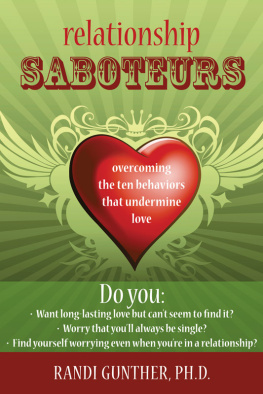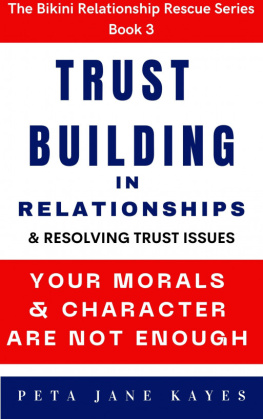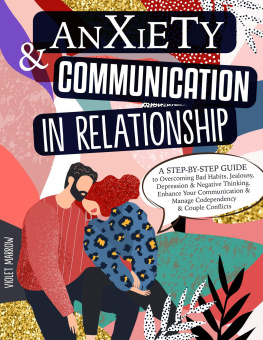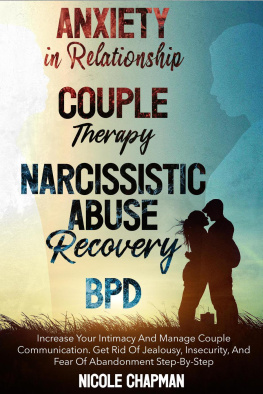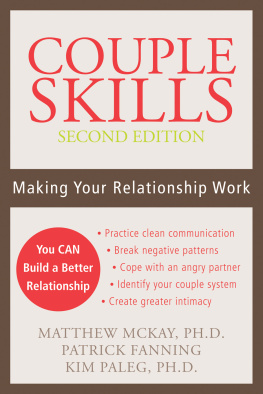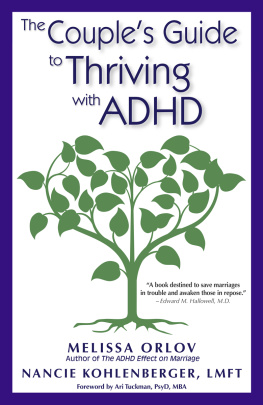How to Improve Your Relationship
Copyright 2019 - All rights reserved.
The content contained within this book may not be reproduced, duplicated or transmitted without direct written permission from the author or the publisher.
Under no circumstances will any blame or legal responsibility be held against the publisher, or author, for any damages, reparation, or monetary loss due to the information contained within this book. Either directly or indirectly.
Legal Notice:
This book is copyright protected. This book is only for personal use. You cannot amend, distribute, sell, use, quote or paraphrase any part, or the content within this book, without the consent of the author or publisher.
Disclaimer Notice:
Please note the information contained within this document is for educational and entertainment purposes only. All effort has been executed to present accurate, up to date, and reliable, complete information. No warranties of any kind are declared or implied. Readers acknowledge that the author is not engaging in the rendering of legal, financial, medical or professional advice. The content within this book has been derived from various sources. Please consult a licensed professional before attempting any techniques outlined in this book.
By reading this document, the reader agrees that under no circumstances is the author responsible for any losses, direct or indirect, which are incurred as a result of the use of information contained within this document, including, but not limited to, errors, omissions, or inaccuracies.
Table of Contents
Description
Introduction
Human beings are social animals. For this reason and others, the natural state of affairs is for individual members of the species to form relationships with other members of the species. Relationships of various kinds form the basis of the complex social groupings that human beings create. Relationships allow men and women to relate to one another: to form an enduring bond and to understand the proper way to interact with one another. Although a relationship does not necessarily mean love, feelings of love and of respect are implicit in most uses of the term relationship.
Indeed, one of the defining characteristics of a relationship is that it can take various shapes. This is both a reality of the different types of interactions that are necessary for human societies as well as an extension of our legacy as primates. Apes are notable among animals for their complex social interactions, and sometimes it can be helpful to study this family of creatures to understand how we as human beings function in our natural environment.
A study of apes reveals that human beings accomplish several things in relationships including forming alliances, romantic relationships, and establishing dominance or a social hierarchy. Men and women do this in much the same way that male and female apes engage in behaviors that define and establish relationships. In fact, a study of apes reveals that many people have a simplistic view of relationships and that understanding human relationships, including why relationships fail, can benefit from going back to the basics somewhat.
What are the purposes of a relationship? Well, as the brief discourse on our primate relatives indicates, relationships help people to understand what their role in the social group is and how to relate to one another. As lifeless as that approach may seem, tackling the subject in this way can help the reader to understand the different types of relationships and why some relationships fail while others do not. Indeed, even in a romantic relationship, we can define such features as to how the pairs relate to and interact with one another emotionally, intimately, and in other ways.
Therefore, learning about relationships is important for several reasons. Learning about this subject allows men and women to understand the different types of relationships they have and how to maintain them. Maintaining relationships is not only important for functioning normally in human society, but it is important in maintaining ones sense of wellbeing. Indeed, even Maslows hierarchy of needs recognizes relationships and attachments as a fundamental need of human beings (in the form of love and belonging).
And it is this approach to relationships as a type of need that is helpful in understanding how crucial relationships are. In his 1943 paper about human motivations, Abraham Maslow presented his theory of the needs that human beings have by virtue of being human. These needs took the form of a pyramid, at the top of which was the somewhat amorphous self-actualization, which involves an individual sense of achieving ones full potential as a human being. Other needs include food and water, shelter, safety, and esteem.
What this indicates is that forming relationships is, in its own way, as essential to human beings as food, water, shelter, being safe and secure, and having self-confidence. Because this hierarchy takes the form of a pyramid, basic physiologic needs (like food, shelter, and water) must be met first while other essential needs are addressed once these basic ones have been met. Relationships as part of a need for love and belonging are on the third step of the five-step pyramid, sitting right in the middle of this construction of human needs: both literally and figuratively.
Indeed, forming the right sorts of relationships can be important for happiness and success in life. Relationships are a central feature of our existence as human beings, and devoting time to understanding them and improving them can result in a dramatic change in the quality of life. Many books have been written on how to win friends and how to be successful at business, and nearly all of these books focus on one thing: forming the right relationships and using them to your advantage.
Although this book does not approach the subject from the standpoint of business, this way of thinking can help readers to understand the sorts of purposes that relationships serve. It may seem strange to think of a relationship in terms of a deal or a business agreement of some kind, but this is basically the sort of purpose that relationships of various kinds serve. They are essentially a lot of sorts between you and another person: an agreement that defines what the relationship is for.
For example, a friendship may be seen as being something jovial between two individuals that are fond of each other, but it comes with some expectations. If I, as a friend, make an appointment to meet I expect you to show up. If I, as a friend, lend you a certain sum of money I expect you to pay me back and to be available to lend me money in the future if I ever need it. I, as a friend, expect you not to make moves on my girlfriend or boyfriend and you can expect me not to do the same to your boyfriend or girlfriend. The idea here is that all relationships actually serve a purpose and are defined by often specific sets of expectations.
The intention of this book is not, in fact, to focus on how to use your relationships to get rich or win friends but to use knowledge of this important human bond to improve your relationship. We focus on the romantic relationship and the many subtypes that fall within the guise of this type of relationship. Learning about the basic nature of relationships and specifically about various aspects of romantic relationships allows men and women to understand what the characteristics of a good relationship are and, perhaps, why some of them may be problematic.
Relationships have value and understanding this is the first step toward maintaining your important relationships and establishing good ones. The value of relationships has been studied extensively in psychology and behavioral biology. At its most basic level, relationships evolved because they served an essential function in primate societies and the existence of these types of bonds enhanced survival. In the first chapter, a holistic definition of the relationship will be defined and different types of relationships will be explored.



